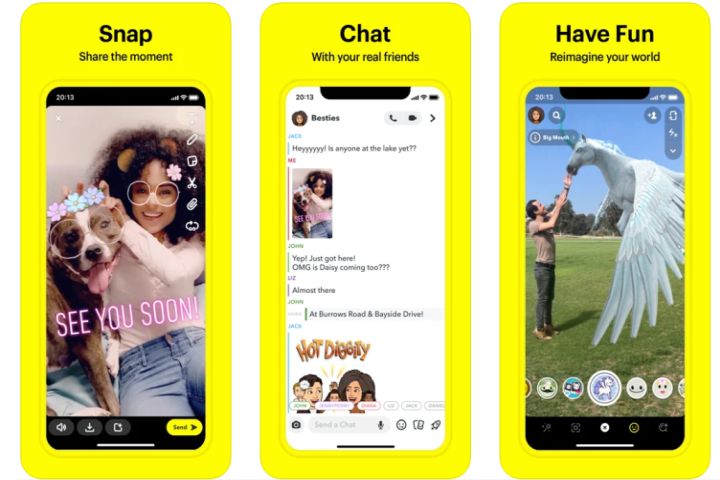Snapchat is continuing its feature rollout to boost social engagement on both its Android and iOS apps. This rollout is part of the app’s ongoing attempt to catch up to Instagram and TikTok, as Snapchat lags significantly behind both titans when it comes to regular users.
The first new feature is the addition of Bitmoji reactions, similar to Apple’s iMessages reactions, which will also be introduced soon to WhatsApp. With this feature, users will be able to respond to messages with any one of the seven Bitmojis available. Users can simply long-press a received message and respond to it with their choice of emoji. The second change is extremely valuable, as it allows users to preview everyone on the voice call before joining the call. It could help users be prepared and ensure their safety. Lenses can now also be added easily to video calls.

The third feature addition permits users to add threaded replies to individual chat messages. This helps users find answers in the same thread instead of endlessly scrolling through thousands of replies. Users can simply long-press a message of their interest, reply to it, and begin threading replies.
The fourth and final feature is the inclusion of poll stickers, which can be used to create emoji-focused polls. These polls can also be shared in snaps and stories. They are available in the app’s sticker folder. The polls will have an element of transparency, letting users see how their friends voted at the polls. The potential for misuse also exists, so users should preferably create these polls only with their close groups or be careful about sharing personal information.
Snapchat has faced tough competition from Instagram, thanks to its “Instagram Reels” feature, as well as TikTok. As of January 2021, Instagram and TikTok boast 1 billion and 800 million monthly users respectively, as opposed to Snapchat’s comparatively moderate 382 million. With these minor changes, Snapchat hopes to begin holding its own in the social media space.



